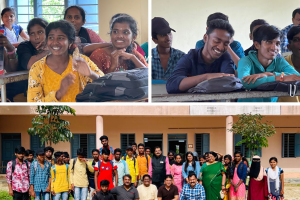How the idea of wickedness has been reframed in movies and stories
Sociologists have termed some problems ‘wicked’, not because of their toxicity but because of their “apparent resistance to solutions”. These could be economic, environmental or political challenges that are tough to crack because they are so complex.
This gives us a reason to revisit the meaning of ‘wickedness’.
Our early orientation to the word and trait comes by way of fairy tales and their evil characters. Once they have read a few fairy tales (or have had these read to them) most children may conclude that stepmothers are almost always wicked, prone to poisoning fruit as well as the minds of fathers. Witches, ogres and giants (except for the stray one that sees the light) are also pretty high up on the wickedness scale,
Movie screenplays of these tales have largely stuck to the original plots and characterisation of their villains. But more recently, movie studios, including Disney, are trying to move away from such black and white portrayals. They are trying to come up with stories that give children and grown-ups more nuanced messages about motives and character – human or otherwise.
‘Frozen’ is an adaptation of Hans Christian Anderson’s dark tale about the Snow Queen and presents its protagonist as a vulnerable and more sympathetic character. In ‘Maleficent’, the movie maker takes another classic villain – the evil fairy in ‘Sleeping Beauty’ – and gives us reasons to love her. In these and similar adaptations, the attempt is to recast traditional bad guys (or girls) as victims of circumstances. They are not born evil but pushed into a certain way of life because of an unfortunate event or series of them.
It doesn’t always work. Sometimes, in the attempt to add complexity, the plot and messages get watered down. As Devon Maloney notes in an article for Wired, “a retold fairy tale only works if it actually tells a better story”. A movie like ‘Maleficent’, he notes, fails in this because of a simplistic narrative in which a character who starts out unblemished and trusting becomes cruel and vindictive after an isolated set of events.
Trying to remake wicked can be tricky, it appears.
But some storytellers have succeeded. The creators of ‘Wicked’, a hit Broadway show that gives us an untold story behind a much maligned character in the ‘Wizard of Oz’, have pulled it off, for example.
In the back story, we find out who Elphaba (otherwise known as the Wicked Witch of the West) actually was and why she made the choices she did. But at no point do we see an evil avatar arising from the ashes of the good one. The end result is a smoother and more believable storyline. Elphaba is largely the same person at the end that she was in the beginning – volatile but also loyal and passionate – but her reputation is based on a few personal choices and decisions, all of which we now understand better. The key takeaway is that while people can change over a lifetime, their behaviour is the result of inherent traits that manifest themselves with varying intensity at different times.
Such complexity is there in good measure in Indian mythology. Most of the characters in the Mahabharata lie somewhere on the grey part of the spectrum. There are ostensibly two sides – one good and the other bad – but members of both camps, from the temperamental Duryodhana to the textbook moralist Yudhisthira, have failings that influence how things pan out.
Gods, who are serving out time as mortals in this world, choose to put their halos aside and stick to a human script. Rakshasas, however, are usually treated as being irredeemably wicked. Even Ravana, the most cultured member of the group, cannot escape this characterisation. As a result, he has to suffer being burned in effigy every year while children stand around and clap gleefully.
Perhaps the Mahabharata’s broader appeal (as compared to the Ramayana) as an epic lies in its ability to tell a powerful story without reducing its characters to caricatures of good or evil.
Wickedness, it seems, is no longer what it used to be. In a more literal sense, the very meaning of the word has changed in modern times. A traditional dictionary lists ‘evil’, ‘base’ and ‘vile’ as among its many synonyms. But young people in certain parts of the world use it to describe an amazing or delightful phenomenon or object as in ‘a wicked sunset’, or ‘a wicked car’.
As we grapple with some of the wicked problems described in this edition of Viewpoint, we can take inspiration from new and refreshing takes on a misunderstood trait. They may provide some perspective for us to view these problems, not as hopeless and beyond resolution, but as unusual challenges that we have to understand better.
Sangita Srinivasa is a Bangalore-based writer and the editor of Viewpoint.



